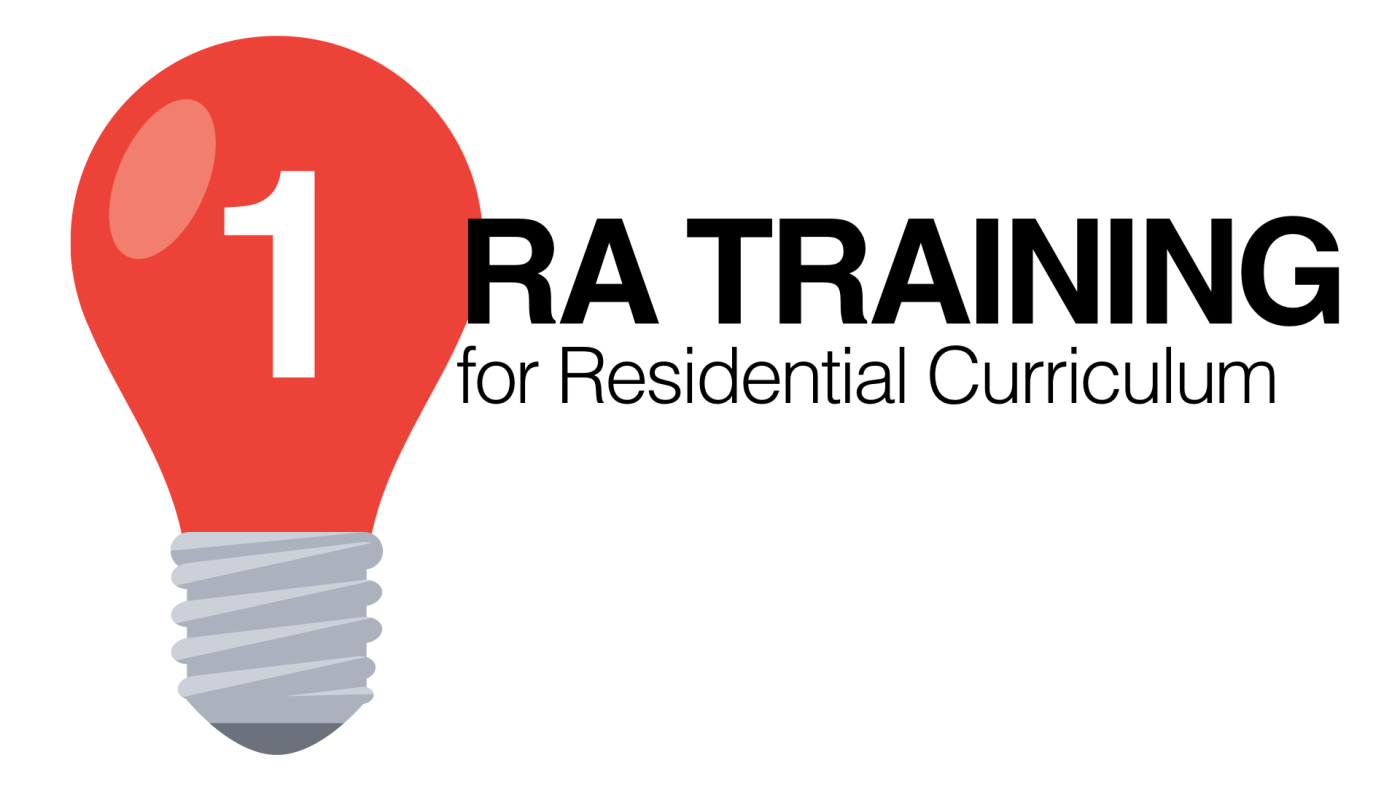The following is part of a series of blog posts addressing a number of areas related to developing a training program for RAs and student staff members working within a residential curriculum model. Posts included in this series are:
In order for a residential curriculum to be successful, the staff implementing a curriculum need to be skilled and well trained in order to execute it. RAs, who are frequently called upon to facilitate learning experiences for their peers, have specific training needs in order to set them up for success. In addition to skill and capacity building, student staff members also need to be trained on curricular basics and the specifics of the learning objectives you have developed for your students.
In designing an RA training for residential curriculum, you can use the curricular approach itself as a guide for how you develop your training programs. Instead of designing a curriculum for resident students, you are essentially designing a curriculum for your paraprofessionals. When doing this design work, keep the following ideas in mind:
Tone Setting and Basics
One of the essential elements of the curricular approach reminds us that, “Student leaders and staff members are considered to be facilitators rather than designers of educational strategies” (Kerr et al., 2017, p. 25). Although student staff members are not designing the curriculum per se, they still need to understand how and why a curriculum exists. When designing a training program for RAs, help them understand the reasons behind why goals and outcomes were selected. Training in this area could involve teaching RAs the basics of student development theory, how a curriculum is developed and revised based on feedback, review, and assessment, and a review of prior assessment data that is driving the curriculum in the coming year.
Involving RAs and Generating Buy-In
A successful design of an RA training program involves staff at all levels of its creation and execution. Although student staff members are not responsible for identifying and writing the learning objectives for training, their insights and feedback can be invaluable in their creation and revision. Utilizing returning staff members in this way validates them as knowers, who, in turn, can be utilized as peer mentors for new staff members. Pairing up a returning RA with a professional staff member in presenting or facilitating a training strategy or session can not only improve its execution, but also provides a leadership opportunity for that staff member. Furthermore, it can make the content more accessible to their student staff peers.
Sequencing and Planning
Designing an RA training program for a curricular approach should use the same principles of design as those you may use in developing a curriculum for your resident students. A key to developing your training is identifying your learning objectives and letting the objectives drive the selection and development of your strategies. Could a training objective be best achieved through online training, a lecture-style presentation, a retreat, or an experiential learning opportunity? Let the learning objectives lead you. Then, as you design your training, make sure each training strategy successively builds your staff members knowledge over time. You might even consider developing distinct training opportunities for your new staff that are different than your returning staff, exactly as you may sequence learning opportunities differently for first year students versus second year students.
Assessment Data and Exercises
Assessment is a key element of a curricular approach. When designing your RA training programs, share and close the loop on assessment initiatives with your RAs. This could include sharing data from benchmarking surveys, to help them understand where your departments success and challenges are, or summative assessment regarding the achievement of your curricular learning objectives and their impact. Incorporating assessment data into your training programs can help student staff members see the impact and importance of the data they are often instrumental in collecting. Finally, conduct learning assessments during RA training itself. By modeling this for your staff members, they will gain a better appreciation for why they are called upon to do assessments with their residents throughout the year.
Throughout the Year
Because a residential curriculum is sequenced throughout the year, there may be different topics that you will need to train your student staff members on that mirror the sequencing of your curriculum. This “just-in-time” training can help your RAs be more effective facilitators for your learning objectives. In a curricular approach you should not think of RA training as a monolithic event. Instead, work to further enhance and build your RA’s skills throughout the year and provide specialized training appropriate to the content they may be facilitating with their residents at a given time.
Conclusion
Transitioning to a curricular approach does not end at the creation of your learning objectives. A full embrace of the curricular approach requires you to rethink your processes and engage in organizational change in order to be successful. Student staff members are key to this success and their training and development requires just as much intentionality as the curriculum you design for your resident students. Think about how you can bring them along for the journey.
Key Questions
- What are the goals and outcomes of your RA training programs?
- How can you enter into a learning partnership with your RAs in the development of the training and as a paradigm through the year?
- How might you look at the RA learning experience as a yearlong opportunity, delivering just-in-time training, instead of it being collapsed into one intensive training at the beginning of the academic year?
